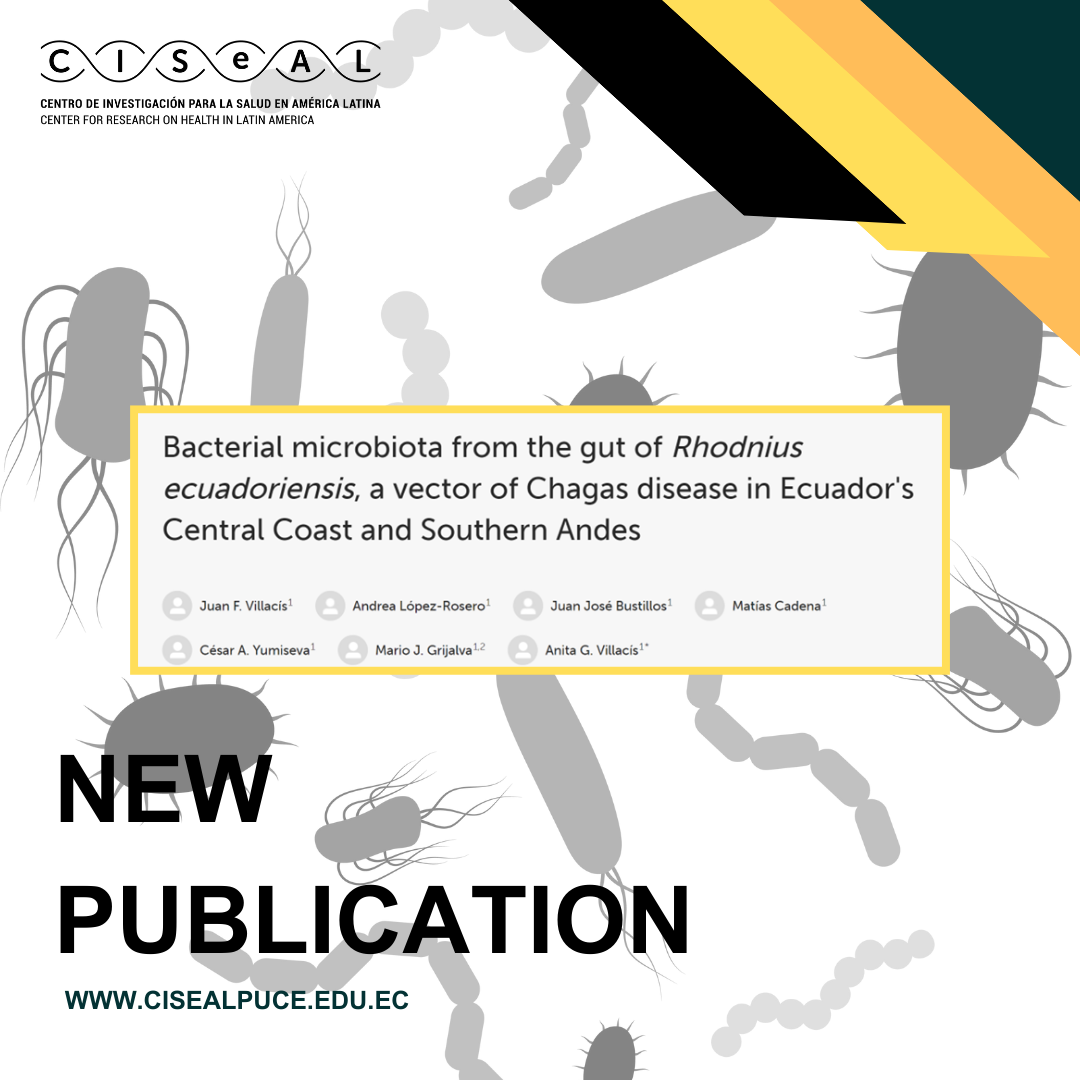
Our researchers at CISeAL, with the notable participation of Francisco Villacís under the direction of Dr. Anita Villacís, in collaboration with experts such as Dr. César Yumiseva, Dr. Mario J. Grijalva, Juan José Bustillos, Andréa López-Rosero, and Matías Cadena, have conducted pioneering research on the bacterial microbiota found in the gut of Rhodnius ecuadoriensis, the main vector in the transmission of Chagas disease on the central coast and southern Andes of Ecuador. The recently published article, titled “Bacterial microbiota from the gut of Rhodnius ecuadoriensis, a vector of Chagas disease in Ecuador's Central Coast and Southern Andes,” represents a significant advance in understanding the relationship between the intestinal microorganisms of this insect and its role in the transmission of Trypanosoma cruzi.
The study used next-generation sequencing techniques to analyze the bacteria present in the gut of this insect. Our researchers identified bacterial communities that could influence Rhodnius ecuadoriensis’s capacity to transmit the parasite that causes Chagas disease. This line of research is key, as understanding the interaction between the intestinal microbiota and the vector could open new opportunities to control disease transmission.
This study aims to answer the following questions: (i) What are the predominant bacterial genera found in R. ecuadoriensis? (ii) Are there differences between the microbiota of triatomines infected with T. cruzi and those that are not? (iii) Are there differences between the intestinal microbiota of wild triatomines and those raised in laboratories? (iv) Does the insect’s gut microbiota inhibit the development of T. cruzi?
This work reinforces CISeAL's commitment to cutting-edge research in public health and reflects the ongoing efforts of our researchers to generate knowledge that can be applied to the control of neglected diseases like Chagas, which affects thousands of people in Ecuador and Latin America.
We invite you to read the full article to delve deeper into these findings and their impact on the fight against Chagas disease at the following link:
https://www.frontiersin.org/journals/microbiology/articles/10.3389/fmicb.2024.1464720/full



